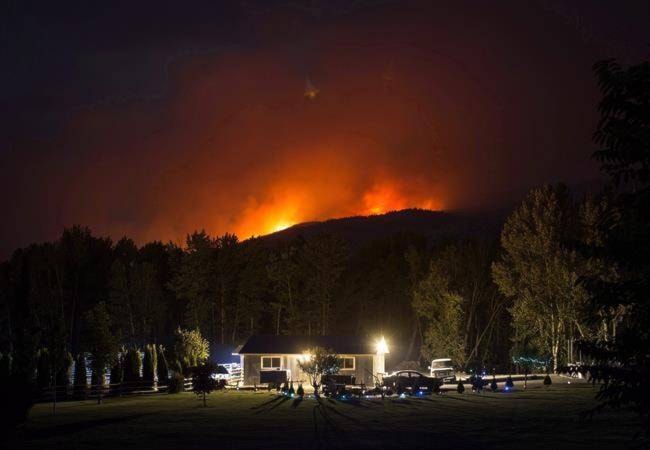CACHE CREEK, B.C. — Communities are still recovering from British Columbia’s worst wildfire season on record, one year after a fateful two-day period in July 2017 that sparked more than 100 new fires and prompted the province to declare a state of emergency.
Cache Creek Mayor John Ranta recalls a fire breaking out on July 6 near the Ashcroft First Nation and sweeping across the countryside the following day, as strong winds propelled it from the horizon to directly opposite the village office in about 20 minutes.
It was the beginning of a devastating wildfire season that ultimately forced 65,000 people from their homes, burned a record-setting 12,000 square kilometres of land and kept the province under a state of emergency for 10 weeks.
Ranta says airport hangars that were destroyed near Cache Creek have not been rebuilt and a heavy blanket of ash on the forest floor flows downhill during rainfall and plugs culverts, increasing problems in the flood-prone community.
About 200 kilometres north of Cache Creek, flames approached Williams Lake and forced the evacuation of the entire city and surrounding areas, and Mayor Walt Cobb says many people who fled never returned.
Cobb says although the fires never actually reached the city, about 1,000 people from the region found jobs elsewhere and many businesses in Williams Lake still have “Help Wanted” signs in the windows.
